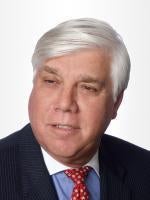The Segal Group is the premier actuarial firm in the country providing services for hundreds of multi-employer pension funds. For almost 40 years it has used its own methodology, known as the “Segal Blend” to calculate employers’ withdrawal liability successfully without an adverse ruling by either a court or an arbitrator in hundreds of cases.
The Segal Blend calculates the discount rate used in determining the present value of pension benefits for payment by a pension fund in the future. This methodology has been the basis for the discount rate used in calculating withdrawal liability for hundreds of multi-employer plans. Because the Segal Blend typically results in using a lower interest rate to calculate withdrawal liability than is typically used for funding purposes, a calculation of withdrawal liability is generally greater using the Segal Blend rate. This has permitted pension funds to collect additional withdrawal liability from hundreds of employers.
Despite being challenged often by employers, the Segal Blend had enjoyed a perfect record of being upheld in every arbitration and court decision until March 26, 2018. In a decision by the United States District Court for the Southern District of New York, Judge Sweet in New York Times Company and the Newspaper and Mail Deliverers ‘-Publishers ‘ Pension Fund found that the Segal Blend violated ERISA. Specifically, the District Court found that the actuary’s “best estimate” of anticipated experience under the plan would have required an interest rate assumption of 7.5%, the rate used for funding purposes, rather than the 6.5% interest rate produced by the Segal Blend. The District Court ordered the Pension Fund to recalculate the withdrawal liability using the higher interest rate.
The matter was appealed to the United States Court of Appeals for the Second Circuit. In May 2019, oral argument was held. Last week the case ended. Surprisingly, the parties stipulated by which the appeal was withdrawn with prejudice and counsel fees were not sought. Importantly, for employers the stipulation left intact Judge Sweet’s decision that using the Segal Blend violated ERISA. The Second Circuit approved that settlement on September 16, 2019.
What are the implications of that stipulation for employers and what factors in Judge Sweet’s decision contributed to the resolution? In New York Times, the decision reduced a withdrawal liability assessment of $26,000,000 to zero. Employers contributing to funds using the Segal Blend should not hesitate to retain actuaries to calculate the withdrawal liability using the rate for funding purposes.
Although the ruling does provide another arrow in an employer’s quiver to use in combatting the predominantly fund favored withdrawal liability process, it does not resolve or even clarify the issue.
Almost concurrently with Judge Sweet’s ruling, District Judge McNulty of the United States District Court for the District of New Jersey in Manhattan Ford Lincoln, Inc. v. UAW Local 259 Pension Plan (“Manhattan Ford”) upheld an arbitrator’s ruling that using a plan’s funding assumption is not required to determine withdrawal liability. In so ruling, the Court determined that the employer had failed to prove that the Pension Fund’s use of the Segal Blend in calculating withdrawal liability was not reasonable. Notably, use of the 7.5% interest rate for funding purposes would have resulted in no withdrawal liability.
Manhattan Ford was appealed to the United States Court of Appeals for the Third Circuit but was settled before the court reached a decision.
Although the Segal Blend issue has not been resolved, the recent resolution should provide an incentive for employers to conduct additional research into the funds to which they contribute and to retain ERISA counsel with specific experience and expertise in withdrawal liability.





 />i
/>i

